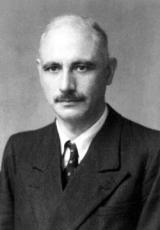Le mur de l'Atlantique

Corps 1
At the beginning of 1942 Hitler needed to build up this coastal fortified line because he had to protect the IIIrd Reich in the West, while fighting the Soviet Union in the East. The Pas-de-Calais, the big ports of the English Channel and of the Atlantic are more fortified. Besides, this system proves to be weaker. The types of armed concrete blockhouses are those of the Siegfried Line built in Germany.
Corps 2
The Organization Todt was an organ of the nazi State directed by civil engineer Fritz Todt, related to the ministry of Armament and who coordinated the projects. Before the Wall, Todt built the heavy artillery batteries in Pas-de-Calais, large submarine shelters in Brest, Saint-Nazaire, Lorient.
In August 1942 the works for the construction of the Wall started : thousands of blockhouses of 700 different types are built. In two years, a million tons of steel, fifteen million cubic-meters of concrete were used by thousands of forced workers, the majority foreigners. More modest, a defence of the mediterranean littoral was built : The Sudwall, particulary in Roussillon. The Todt organization has also built an enormous blockhouse in Pas-de-Calais : the Cupola, close to Saint-Omer, the fortress of Mimoyecques, the bunker of Eperlecques, where many deportees were found dead because of inhuman working conditions.
In Lorient, the submarine base built between 1941 and 1943, including three colossal shelter blocs, were used for espionage activities connected to Jacques Stosskopf, general engineer of the marine, who pretended to collaborate with the enemy but who informed London about all the submarine, ship movements and on the new material concerning the units etc. Arrested on the 21st of February 1944, he had been deported and executed on the 2nd of September in the camp of Struthof. The base of Keroman is now a days called like him.


